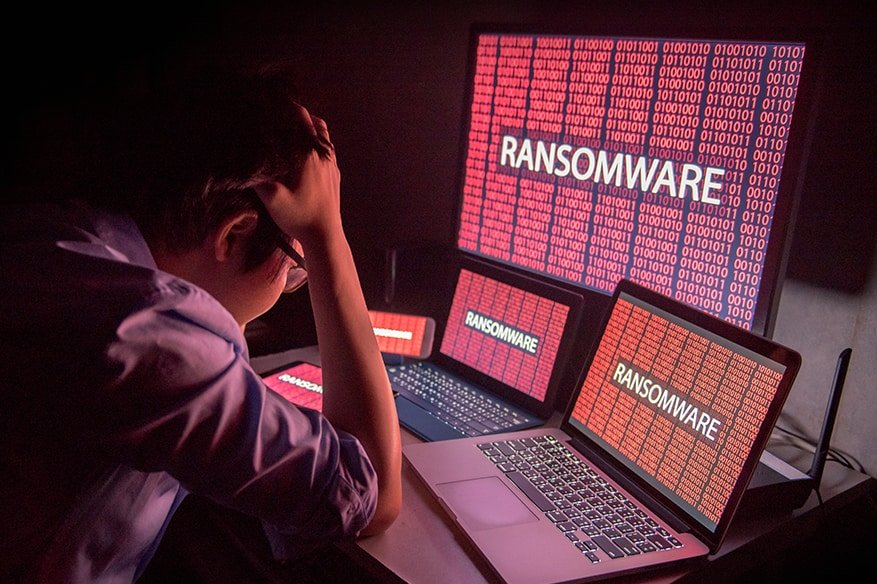What Program, Released In 2013, Is an Example of Ransomware?

What Program, Released In 2013, Is an Example of Ransomware? The answer is a crypto locker. Ransomware is malevolent programming that scrambles documents on a contaminated PC, in this manner keeping the proprietor from getting to them. The proprietor is approached to pay cash as a trade-off for the decoding tool to be utilized to open their records.
The payoff for private clients usually is established at a couple of hundred dollars, though entrepreneurs are ordinarily approached to pay maybe 10 times that. By and large, hackers request that the payoff be paid in digital currency to not be followed by the specialists.
Like any remaining kinds of pernicious programming, ransomware is, for the most part, disseminated through phishing messages that connect to a malignant substance or contain traded-off connections. Moreover, clients can unwittingly transfer it when they click on polluted sites that introduce malevolent programming on their PC without their assent.
These days, ransomware is additionally disseminated through online media and texting applications. When you introduce malware on your PC, it will scramble your documents very quickly, thus you will not have a lot of time to respond.
What Type of Ransomware Exists?
Computer Lockers
Otherwise called storage ransomware, PC lockers deny your admittance to your PC’s interface, hence keeping you from utilizing it. On the off chance that your system is contaminated with storage ransomware, a pop-up tab with its creator’s message and installation directions will show up on the system’s boot-up.
The creator may likewise attempt to convince you the payoff is really a fine given to you by a government agency. This kind of ransomware generally just forestalls admittance to your PC’s interface and doesn’t influence the files or the framework. You may subsequently have the option to eliminate the virus and maintain every one of your documents as flawless.
Data Lockers
Since they change singular documents and don’t merely obstruct admittance to the PC interface, info storerooms are possibly riskier than PC lockers. Otherwise called crypto-ransomware, this sort of programming checks your PC for crucial documents and modifies their tool to one your PC will not have the option to perceive.
To open your records, you need to remit the sum and get the decoding key. The programmers with data lockers mainly focus on individuals who don’t make data reserve copies consistently.
Confronted with the chance of losing every one of their documents, the casualties are bound to wage the reimbursement; however, a decent malware decoder can assist them with recapturing admittance to their records without paying.
What Supplementary Kinds of Ransomware Can You Get?
Over the last couple of years, new kinds of ransomware have sprung up. They include:
Leakware
Otherwise called doxware, this sort of ransomware looms the casualty with distributing their own data on the off chance that they don’t pay the payment. As a rule, the programmers behind leakware don’t target explicit folders that might hold delicate data.
All things considered, they are essentially misusing the way that numerous clients store private data on their PCs (photographs, recordings, Mastercard information, and individual archives) and are expecting to cause alarm.
Scareware
Generally taking on the appearance of antivirus programming, scareware utilizes pop-flies to notify the casualty about the supposed issues located on the PC.
As opposed to straightforwardly blackmailing cash from them, scareware impulses the casualties to rapidly buy counterfeit antivirus programming as a remedy to every one of these issues expeditiously. Once introduced and paid for; nonetheless, the product rather behaves like a virus and gathers the casualties’ very own data.
Ransomware-as-a-Service (RaaS)
Although it’s precisely not a distinct sort of ransomware, this is a rising plan of action flourishing on the dull web. Instead of composing their personal cypher, wishful programmers can make an arrangement with an outsider’s help that will build up the product and quickly circulate it to likely casualties. Under this arrangement, the RaaS supplier will keep a share whereas the remainder is remitted to the programmer.
How Do You Deal with Ransomware Attacks?
At the point when confronted with a ransomware assault, numerous individuals decide to pay the sum instead of bargaining and losing their significant records. Specialists unequivocally counsel against this, and it probably won’t be required at all.
The vast majority of the top anti-malware programming can rapidly identify and eliminate malware from a PC without erasing your documents. This probably won’t be conceivable with a portion of the further cutting-edge ransomware tools, which is why it’s critical to realize how to forestall ransomware assaults.
It is fundamental that you consistently update your systems just as all the projects are introduced on your PC. At long last, remember to consistently back up the entirety of your information, either to the cloud or an outer hard disk. Thus if a harmful program scrambles your documents, you can still access them.
What Program, Released In 2013, Is an Example of Ransomware, Final Thought
To sum it all up, in order to maintain the status of your PC as secure from ransomware, you should at no time open wary emails or Snap-On any links and attachments confined in them; this is because the ransomware exploits the defects in your PC framework.